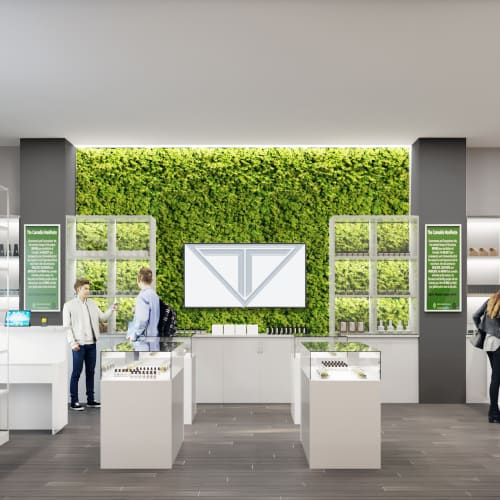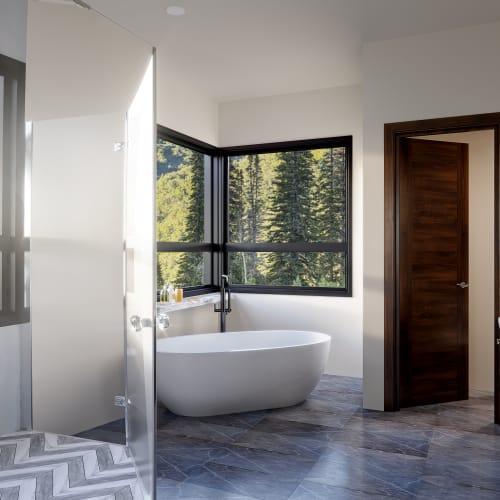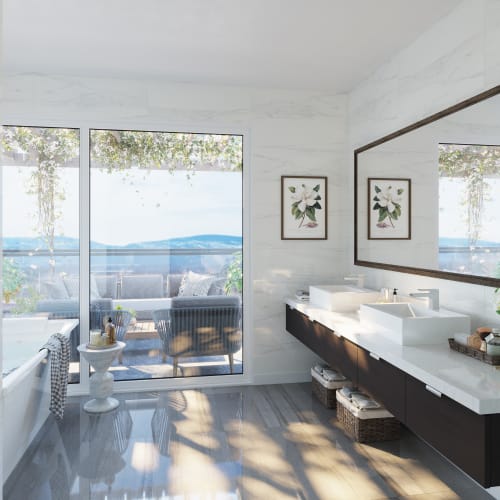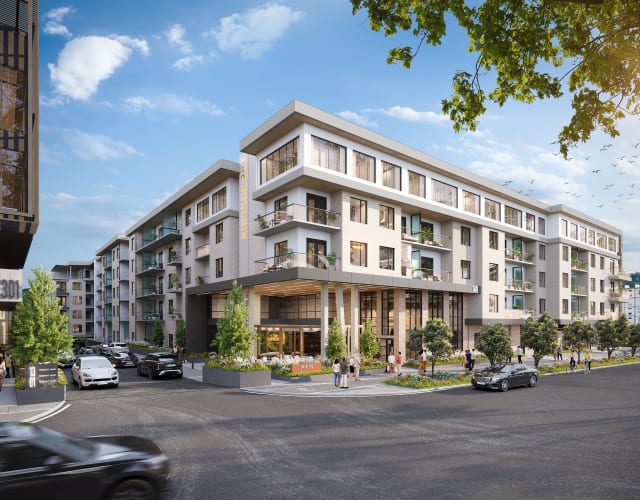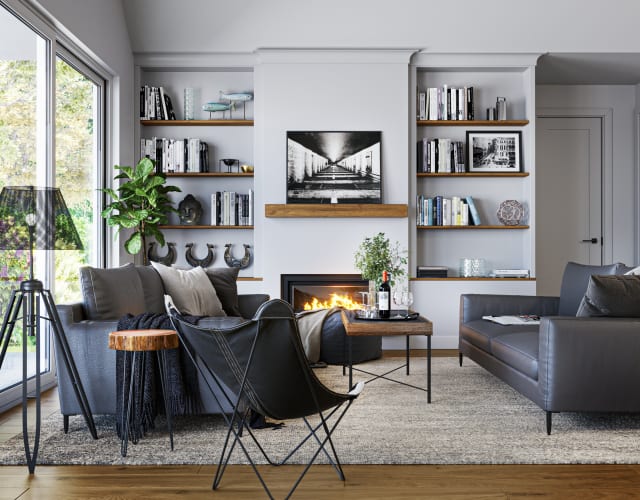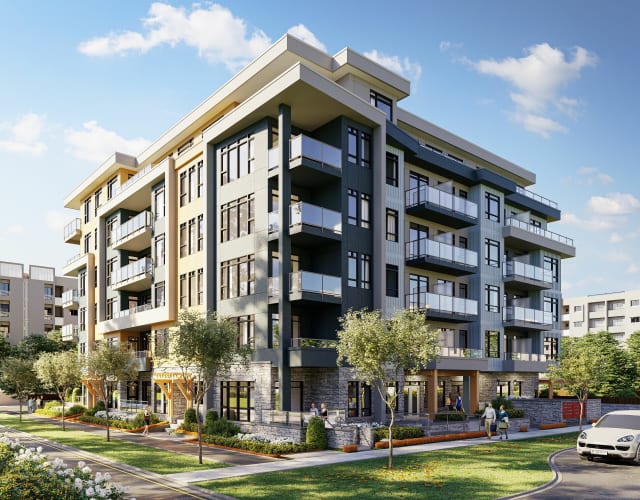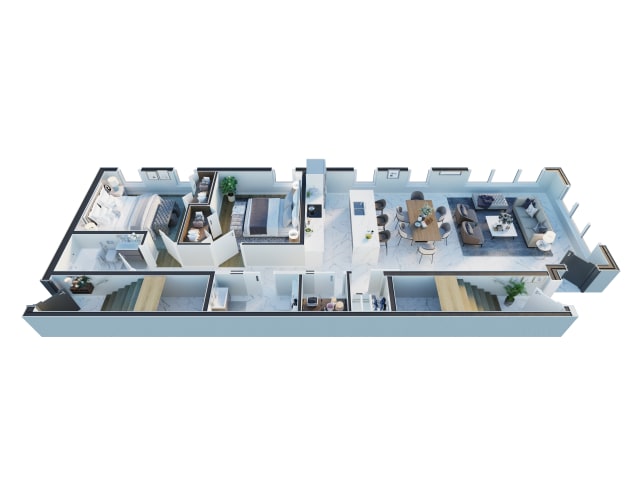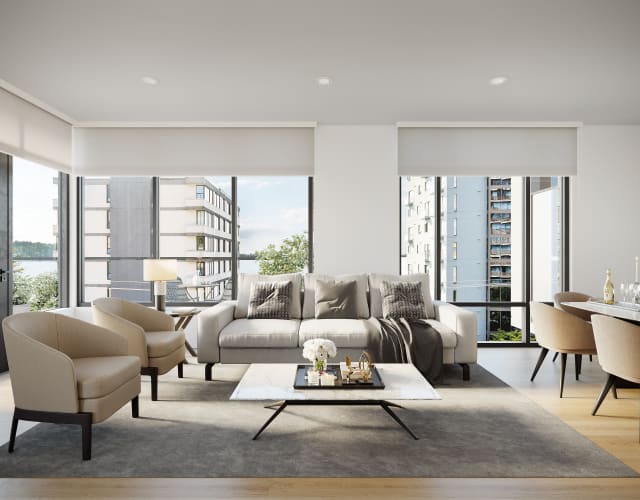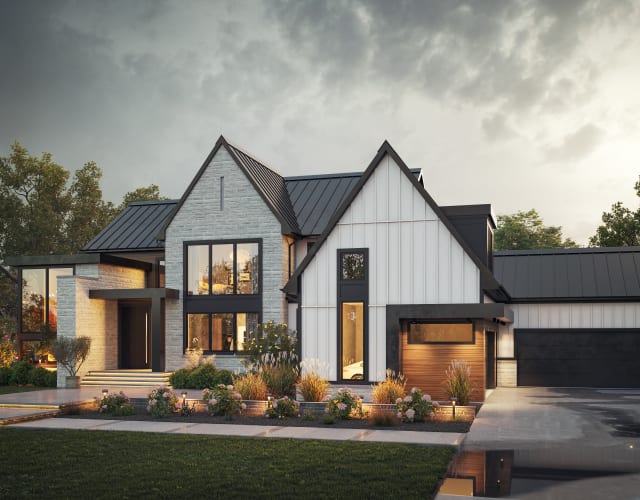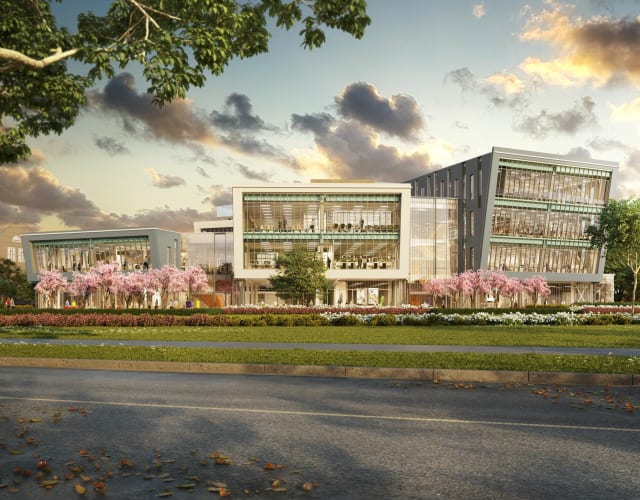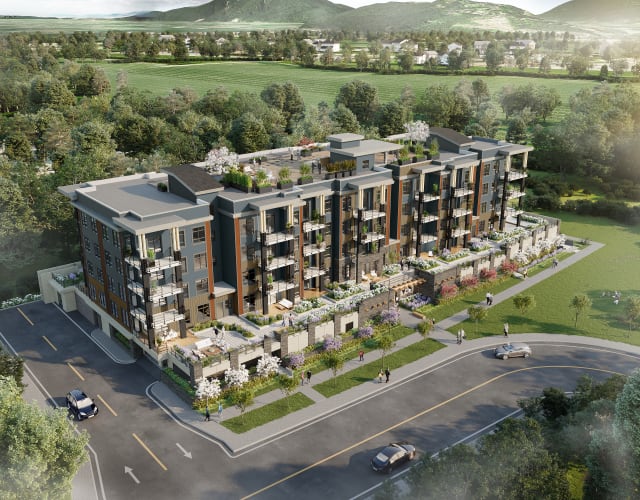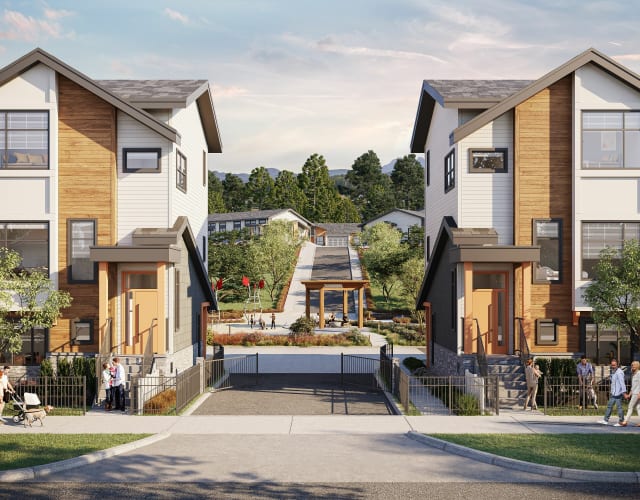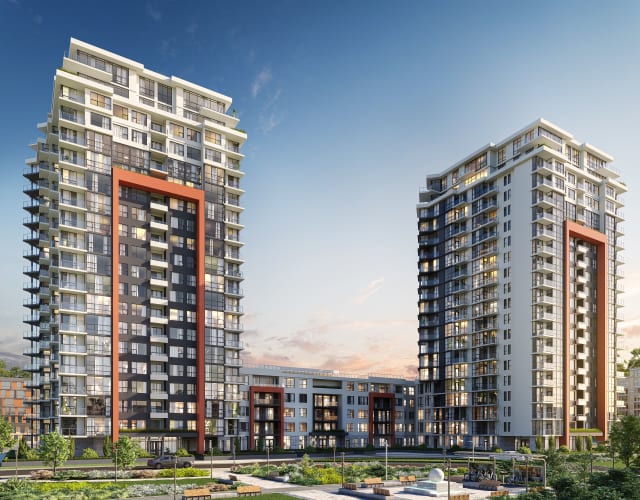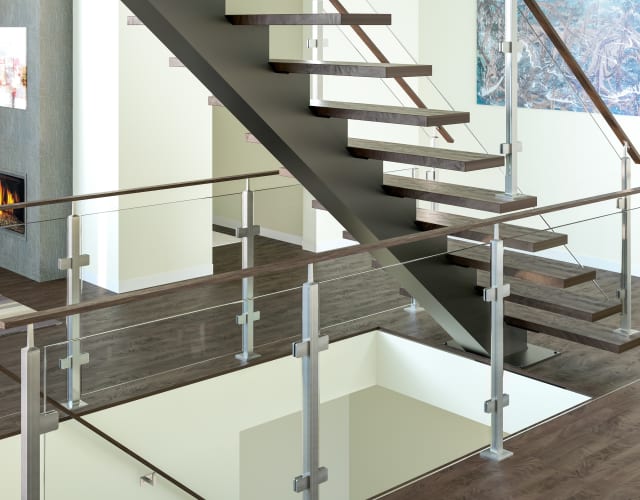The Impact of Interior Rendering on the Interior Design Industry
by RealSpace
Interior rendering has become an indispensable tool in the interior design industry, revolutionizing how designers conceptualize and communicate their ideas. By providing realistic visualizations of design concepts, interior rendering has profoundly impacted various aspects of the industry. This article explores the significant impact of interior rendering on the interior design industry and how it has transformed how designers work and interact with clients and stakeholders.
If this sounds like a good fit, be sure to check out our interior rendering services to get a quote.

Enhanced Visualization and Communication:
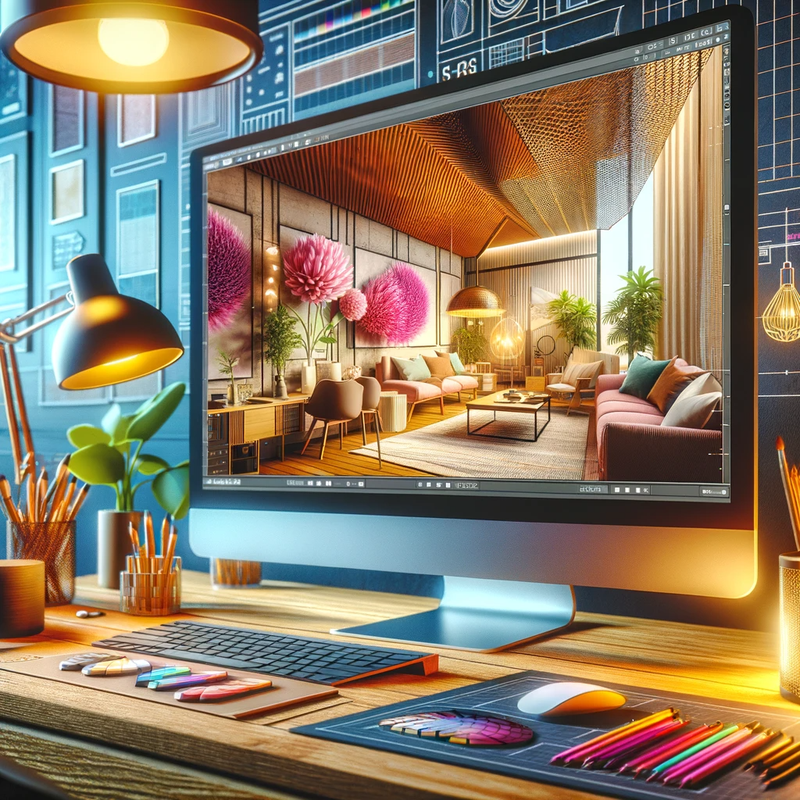
One of the most significant impacts of interior rendering is its ability to enhance visualization and communication. Traditional design methods often relied on 2D sketches or mood boards to convey design concepts, which could sometimes lead to misinterpretation or a lack of clarity. With interior rendering, designers can now create realistic and immersive visualizations of their ideas, bringing them to life easily and understandably for clients and stakeholders.
Through interior rendering, designers can effectively convey the spatial relationships, materials, and lighting effects they envision for a space. Realistic renderings enable clients to visualize the result and better understand how the design will look and feel. This visual clarity fosters better communication and reduces the likelihood of misunderstandings or unmet expectations. Clients can provide more informed feedback, allowing designers to make adjustments and refinements early, ultimately leading to a more successful and satisfying design.
Interior rendering empowers designers to showcase their creativity and design intent compellingly and realistically. They can experiment with various design options, textures, and colours, helping clients visualize distinct possibilities and make more confident decisions. By providing a visual representation of the design concept, interior rendering adds depth and context, enabling clients to connect emotionally with the space before it is even built.
The ability of interior rendering to convey lighting effects is impactful. Lighting plays a crucial role in the ambiance and functionality of an interior space. With interior rendering, designers can simulate different lighting scenarios, demonstrating how natural light, artificial lighting fixtures, and the interplay of light and shadow will transform the space throughout the day. This allows clients to understand better the atmosphere and mood the design will create, ensuring that their vision aligns.
In summary, interior rendering enhances visualization and communication by providing realistic and immersive representations of design concepts. It effectively enables designers to convey spatial relationships, materials, and lighting effects, resulting in clearer communication, reduced misunderstandings, and more informed decision-making.
Streamlining the Design Process:
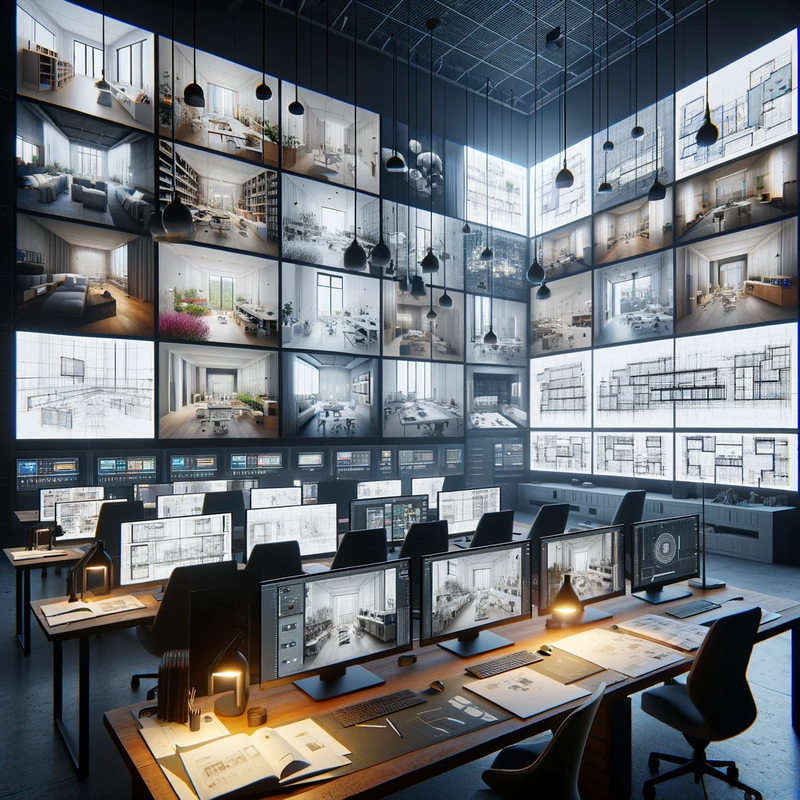
Interior rendering plays a vital role in streamlining the design process by enabling faster iterations and revisions. In the past, designers would often rely on physical mock-ups and prototypes to evaluate and refine their designs. This process was time-consuming and often resulted in significant delays. With interior rendering, designers can quickly create multiple iterations of a design and make adjustments on the fly. This allows for a more agile design process, where changes can be implemented swiftly and efficiently.
Interior rendering also facilitates collaboration among designers, architects, and other stakeholders involved in the design process. By visually representing the design, everyone involved can better understand and contribute to the project. Design teams can share their ideas and provide more effective and productive feedback. This collaborative approach leads to improved design outcomes and a more cohesive result.
Interior rendering reduces errors and misunderstandings by providing accurate visual representations. Misinterpretations or miscommunications can occur with traditional 2D drawings or verbal descriptions with the use of realistic 3D renders. This visual clarity helps align everyone's expectations and reduces the likelihood of costly mistakes during construction.
Cost and Time Efficiency:
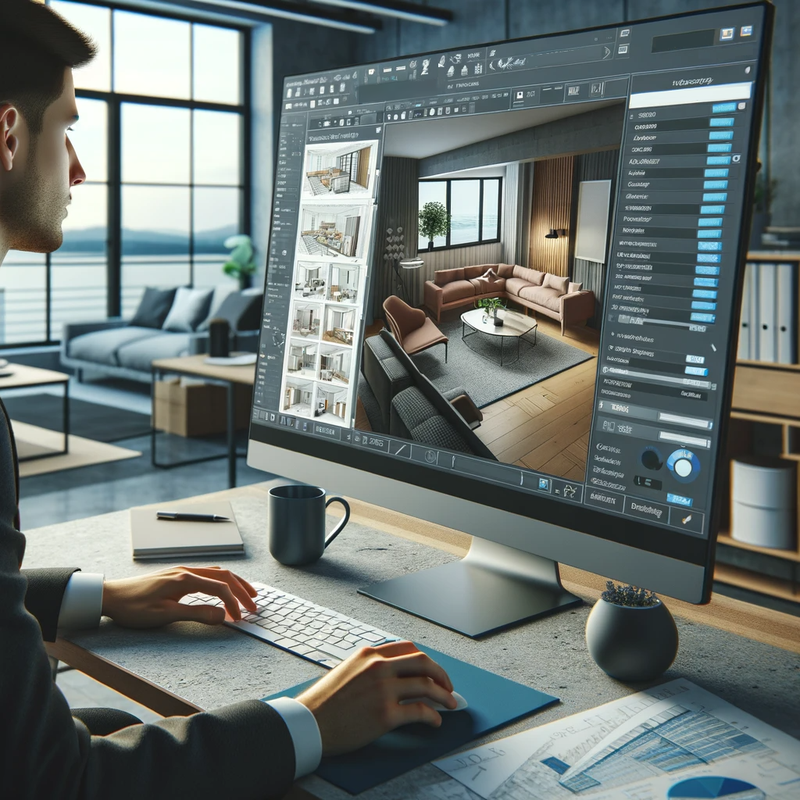
Interior rendering offers significant cost and time efficiency benefits to the interior design industry. Traditionally, physical mock-ups and prototypes were essential tools for visualizing and validating design concepts. However, these physical representations were not only time-consuming to create but also expensive. Interior rendering eliminates the need for physical mock-ups, saving both time and money.
By utilizing interior rendering, designers can make design decisions early, which can profoundly impact cost management. With realistic visualizations, designers and clients can better understand the implications of their design choices. This early clarity enables more informed decision-making, reducing the likelihood of costly changes during construction. It also helps optimize resource use, ensuring that materials and finishes are selected with precision and cost-effectiveness in mind.
Interior rendering minimizes the need for extensive physical prototyping and the associated costs. Designers can create virtual prototypes, test different options, and assess their impact without the expense of building physical models. This saves money and speeds up the design process, allowing designers to meet tighter project deadlines.
In summary, interior rendering streamlines the design process by expediting iterations and revisions, facilitating collaboration, and reducing errors. It also brings cost and time efficiency to the interior design industry by eliminating the need for physical mock-ups, enabling early design decisions, and minimizing costly changes during construction. By harnessing the power of interior rendering, designers can optimize their processes and deliver projects more efficiently and effectively.
Client Engagement and Satisfaction:
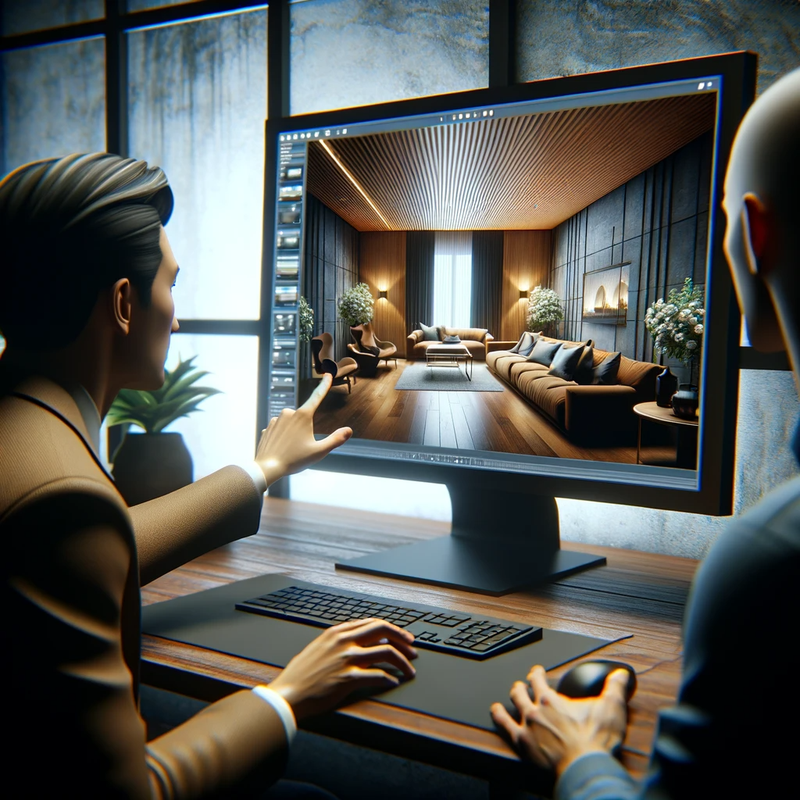
Interior rendering significantly enhances client engagement throughout the design process. With immersive and realistic visualizations, clients can truly envision the result of their interior space. This level of engagement goes beyond traditional design presentations and fosters a deeper connection between clients and their future spaces.
By allowing clients to visualize the design in a realistic and detailed manner, interior rendering empowers them to make more informed decisions. Clients can better understand how distinct elements, such as furniture arrangements, colour schemes, and materials, will come together to create the desired ambiance and functionality. This understanding helps to build trust and confidence in the design process, as clients have a clearer picture of what to expect.
Interior rendering generates a sense of excitement and enthusiasm for the design process. Seeing their ideas come to life visually compellingly ignites a sense of anticipation and emotional investment. Clients become active participants in the design journey, collaborating with designers to refine and shape their vision. This heightened level of engagement leads to more satisfying outcomes and strengthens the client-designer relationship.
Marketing and Promotion:
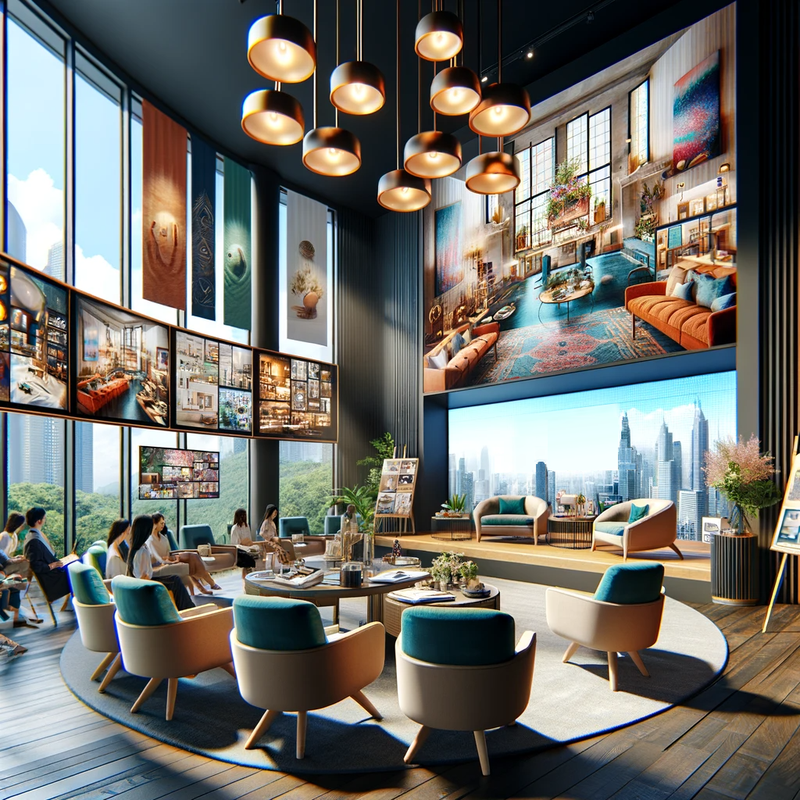
Besides its impact on the design process, interior rendering is a powerful tool for marketing and promotion within the interior design industry. Design firms and professionals can leverage interior renderings to create compelling visuals for advertising, websites, and social media platforms. These stunning and realistic representations of interior spaces grab attention and leave a lasting impression on potential clients.
Interior renderings act as a visual portfolio, showcasing the skills and expertise of designers. By presenting high-quality and visually captivating renderings, design firms can attract clients who are seeking exceptional and well-executed interior designs. The ability to showcase previous projects and design concepts through interior rendering establishes credibility and shows the design team's capabilities.
In the age of social media and online platforms, interior rendering provides a competitive edge. Designers can captivate their audience with visually striking renderings and stand out in a saturated market. These renderings can be shared on various platforms, allowing potential clients to engage with the designs, comment, and share their enthusiasm. This exposure helps to increase brand visibility and attract a broader audience.
Interior rendering allows clients to visualize and share their design concepts more effectively with others, such as family members, friends, or business partners. By presenting visually stunning and realistic renderings, clients can effectively convey their vision and generate support and excitement around their projects.
In summary, interior rendering enhances client engagement and satisfaction by providing immersive visualizations, enabling informed decision-making, and creating a sense of excitement for the design process. It also serves as a powerful marketing and promotional tool, attracting potential clients through visually compelling renderings and establishing credibility within the industry. By harnessing the potential of interior rendering, designers can effectively engage with clients, elevate their marketing efforts, and showcase their expertise.
Expansion of Design Possibilities:
Interior rendering opens up a world of possibilities for designers to push the boundaries of creativity and experimentation. By providing a virtual representation of the design, designers can explore alternative options and possibilities that were previously challenging to visualize. This freedom allows designers to be innovative and develop unique and innovative design solutions.
With interior rendering, designers can experiment with different colour schemes, material combinations, and furniture arrangements without needing physical prototypes. Virtual representations enable designers to visualize the impact of their design choices in real time, empowering them to make informed decisions about the aesthetics and functionality of the space. This flexibility encourages exploration and the development of truly distinctive design solutions.
Interior rendering encourages designers to think beyond traditional design norms and embrace unconventional ideas. By visualizing these ideas virtually, designers can assess their feasibility and impact, leading to the discovery of fresh perspectives and original concepts. Interior rendering fosters a spirit of innovation and allows designers to create spaces that inspire and captivate.
Sustainability and Environmental Considerations:
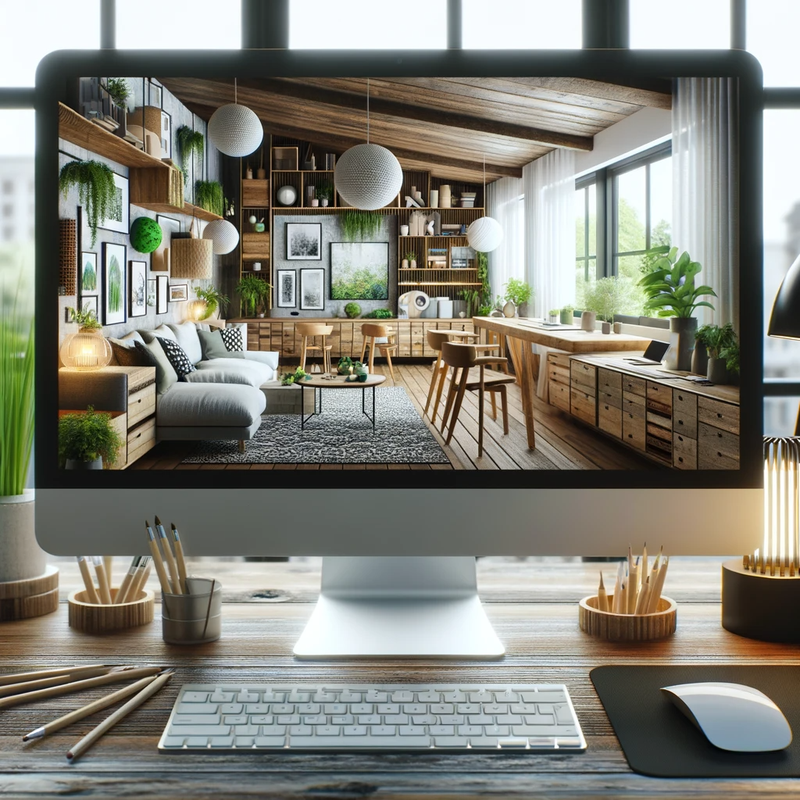
In an era of increasing focus on sustainability, interior rendering plays a valuable role in designing with environmental considerations in mind. By simulating and analyzing environmental factors such as lighting, energy usage, and sustainability, designers can make informed decisions to create greener spaces.
Interior rendering allows designers to experiment with various lighting scenarios, assessing the impact of natural light, artificial lighting systems, and energy-efficient fixtures. By optimizing lighting conditions virtually, designers can create spaces that maximize natural light, minimize energy consumption, and enhance occupant comfort. This process helps reduce the design's ecological footprint, contributing to a more sustainable future.
Interior rendering enables designers to evaluate the sustainability of materials and finishes. By simulating different material options, designers can assess factors such as durability, recyclability, and environmental impact. This analysis supports the selection of eco-friendly materials and fosters a more sustainable approach to interior design.
By using interior rendering to simulate and analyze sustainability factors, designers can design spaces that meet aesthetic and functional requirements and align with environmental goals. It allows for a holistic approach to design, considering the long-term impact on the environment and the well-being of occupants.
In summary, interior rendering expands the design possibilities by encouraging creativity, experimentation, and the exploration of alternative options. It empowers designers to think innovatively and develop unique design solutions. Interior rendering contributes to sustainability in interior design by simulating and analyzing environmental factors, supporting informed decisions that promote energy efficiency and the use of eco-friendly materials. By embracing the opportunities provided by interior rendering, designers can create visually captivating and environmentally responsible spaces.
Evolving Technology and Advancements:
Interior rendering continues to evolve with advancements in technology, offering exciting possibilities for the future of the interior design industry. Two notable technological advancements that are transforming interior rendering are real-time rendering and virtual reality (VR).
Real-time rendering allows designers to visualize and change the design in real time, providing instant feedback on the visual impact of design choices. This technology eliminates the need for time-consuming rendering processes and allows for immediate exploration and adjustments. Designers can manipulate materials, lighting, and other elements on the fly, enhancing the efficiency and interactivity of the design process.
Virtual reality (VR) takes interior rendering to the next level by providing immersive experiences for designers and clients. By wearing a VR headset, users can virtually walk through and interact with the designed space, gaining a sense of scale, proportion, and ambiance. VR enables clients to experience their future spaces before construction begins, confidently making design decisions and reducing the likelihood of costly changes later on.
The future of interior rendering holds even more exciting possibilities. Predicted advancements include the integration of artificial intelligence (AI) and machine learning, which can automate certain aspects of the rendering process and provide intelligent design recommendations. Using AI algorithms to analyze design data and generate alternative design options could open new avenues for exploration and creativity.
Advancements in rendering hardware and software are also expected to enhance the speed and quality of interior rendering. Faster processors and improved rendering algorithms will reduce rendering times, allowing designers to create more iterations and refine their designs with greater efficiency. Texture mapping and material simulation advancements will lead to more realistic and immersive visualizations.
Case Studies: Success Stories and Exemplary Projects:
Examining successful interior design projects that have used interior rendering provides valuable insights into the impact and potential of this technology. These case studies show how interior rendering has transformed the design process, enhanced client experiences, and achieved remarkable design outcomes.
One notable case study is the redesign of a luxury hotel. The interior design team used interior rendering to visualize different room configurations, material choices, and lighting schemes. The realistic renderings enabled the team to fine-tune the design elements to create a luxurious and inviting atmosphere. Impressed by the immersive visualizations, the client gained a clear understanding of the design and confidently approved the project. The interior rendering played a crucial role in aligning the design team's vision with the client's expectations, resulting in a successful project outcome.
Another case study involves the renovation of a corporate office space. The design team employed interior rendering to simulate different office layouts, furniture arrangements, and colour palettes. By presenting these realistic visualizations to the company's management, the team garnered support and consensus among stakeholders. The interior rendering provided a tangible representation of the design concepts, facilitating effective communication and collaboration throughout the project. The ultimate design achieved a modern and functional workspace that met the client's objectives and exceeded their expectations.
These case studies highlight the tangible impacts of interior rendering on the interior design process, client engagement, and project success. They show how interior rendering has become an invaluable tool for designers to bring their visions to life and achieve outstanding results.
Conclusion
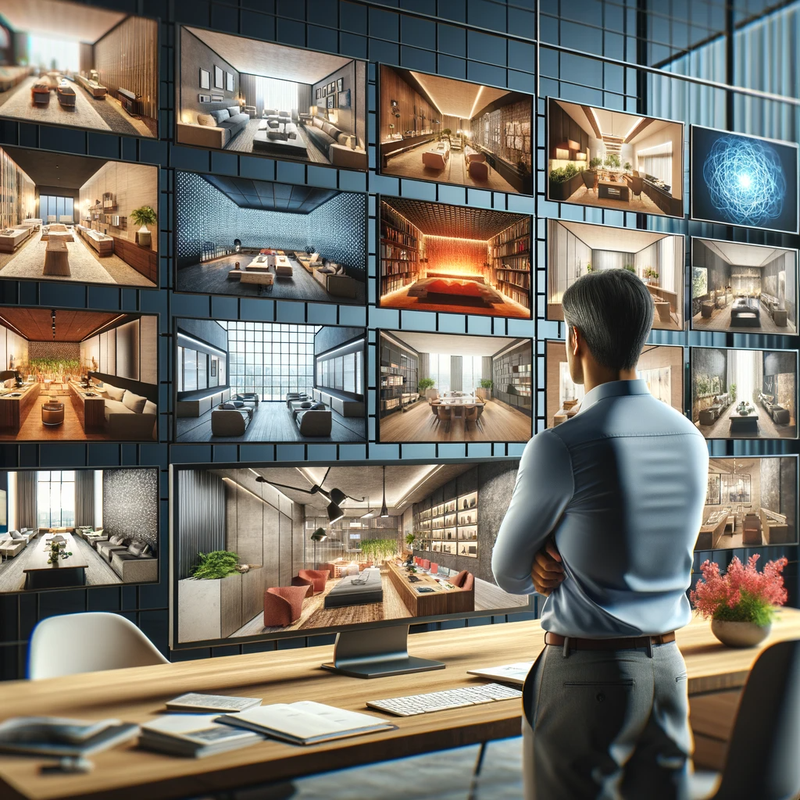
In conclusion, interior rendering has significantly impacted the interior design industry, transforming how designers visualize, communicate, and realize their design concepts. Through enhanced visualization and communication, interior rendering has streamlined the design process, leading to cost and time efficiencies. It has also increased client engagement and satisfaction by providing immersive and realistic visualizations that allow clients to make informed decisions. Interior rendering has helped to market and promote interior design services and has expanded design possibilities, encouraging creativity and innovation.
As technology continues to advance, interior rendering is poised for further evolution. Real-time rendering, virtual reality, artificial intelligence, and other advancements will shape the future of interior rendering, offering even more exciting possibilities for designers. These advancements will enable real-time design exploration, immersive experiences, and intelligent design recommendations.
Case studies have shown the remarkable impacts of interior rendering on project outcomes. From luxury hotel redesigns to corporate office renovations, interior rendering has played a pivotal role in achieving successful design solutions. It has fostered effective communication, gained client confidence, and created spaces that exceed expectations.
As interior rendering continues to evolve, interior designers need to embrace its potential and stay abreast of the latest advancements. Designers can enhance their design processes by leveraging interior rendering technology, elevating client experiences, and achieving outstanding results. However, it is crucial to acknowledge that interior rendering is an ever-evolving field, and designers should be prepared to adapt to the ongoing technological advancements and changes.
In conclusion, the impact of interior rendering on the interior design industry is profound. It has revolutionized how designers visualize and communicate their ideas, streamlined the design process, and enhanced client engagement and satisfaction. Interior rendering has also opened up new possibilities for creativity, experimentation, and sustainability. With the continued evolution of technology, interior rendering holds tremendous potential for the future, offering real-time rendering, virtual reality experiences, and intelligent design recommendations. By embracing interior rendering and staying informed about its advancements, interior designers can unlock additional levels of creativity and deliver exceptional design solutions in an ever-changing industry landscape.

